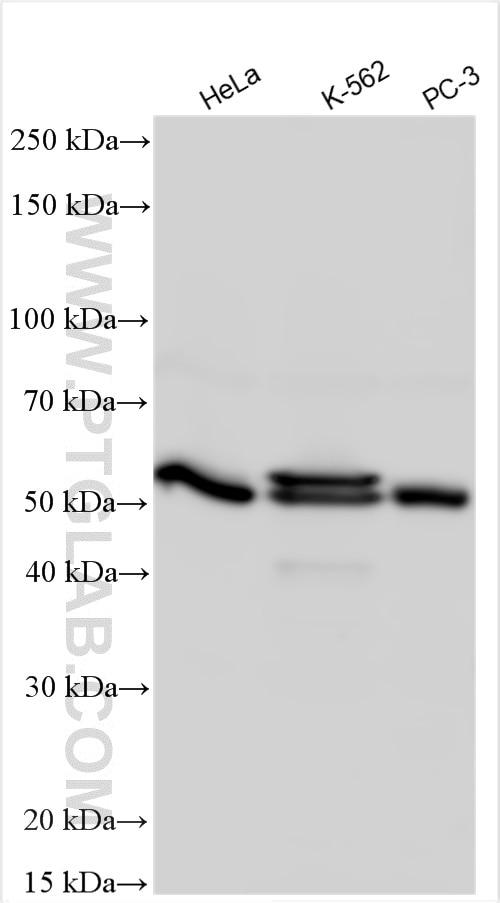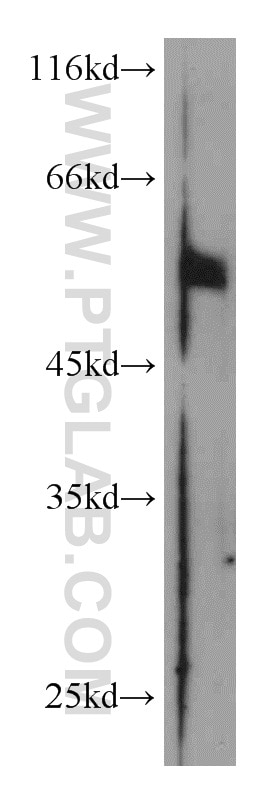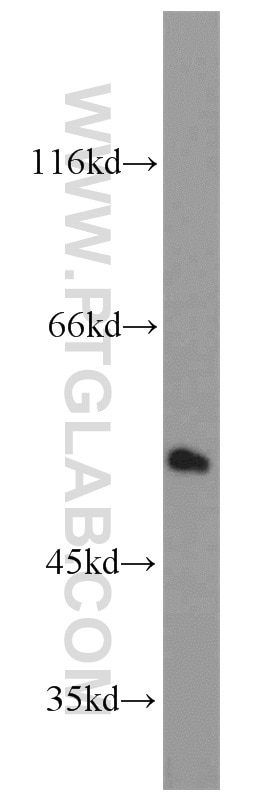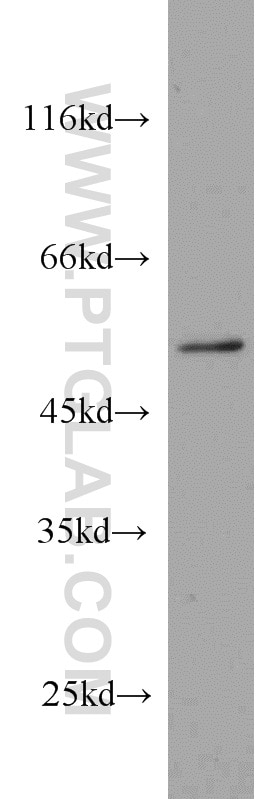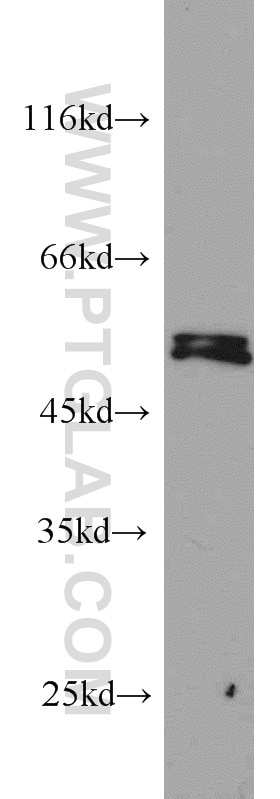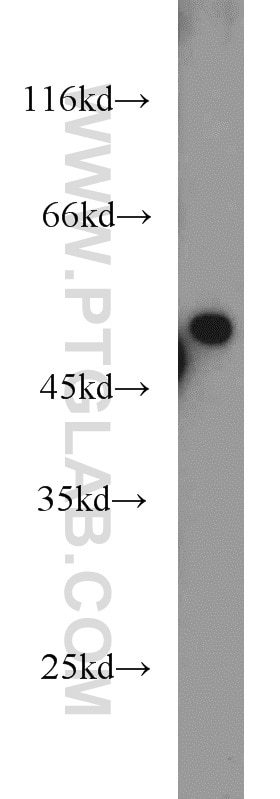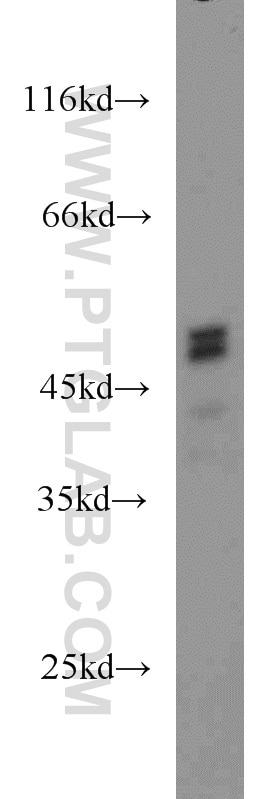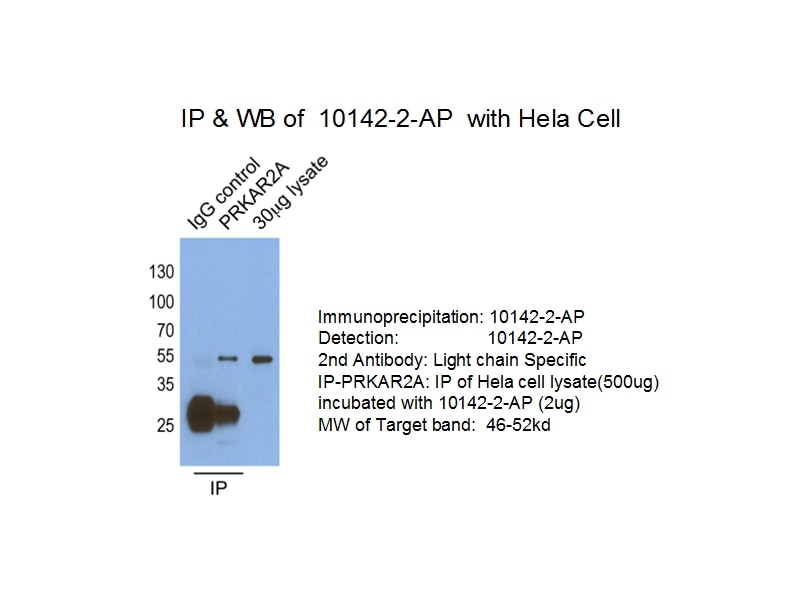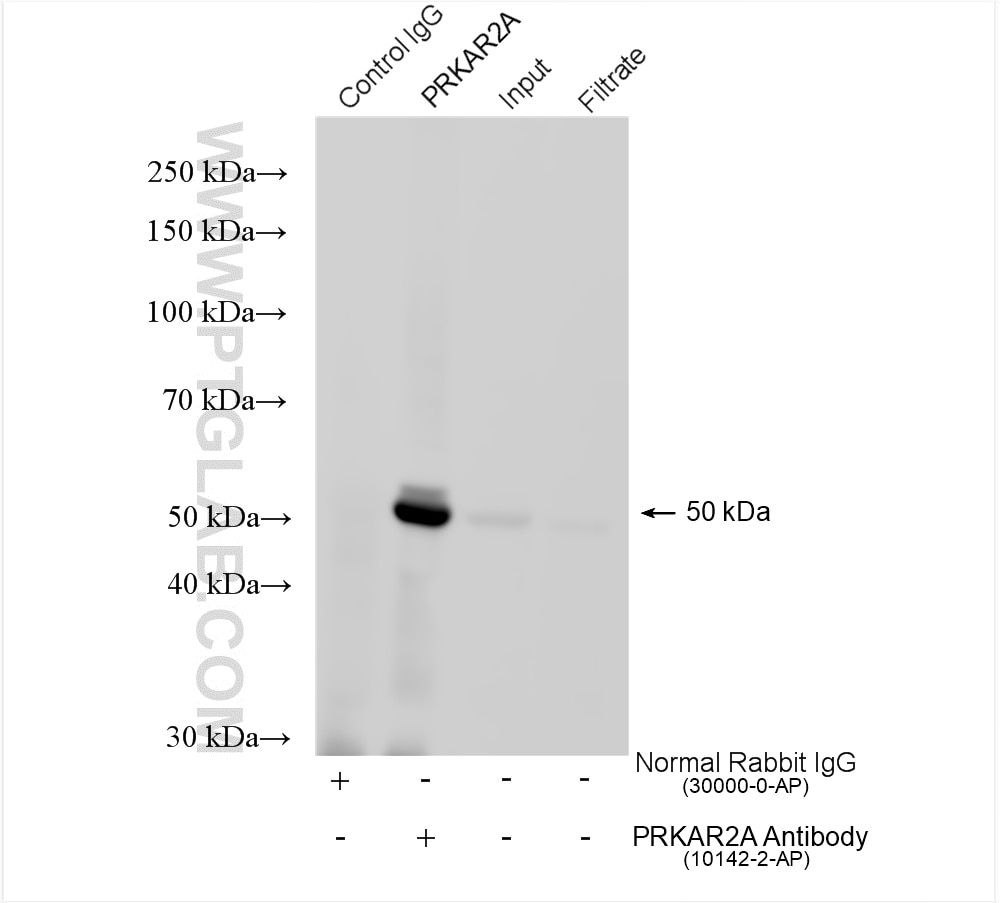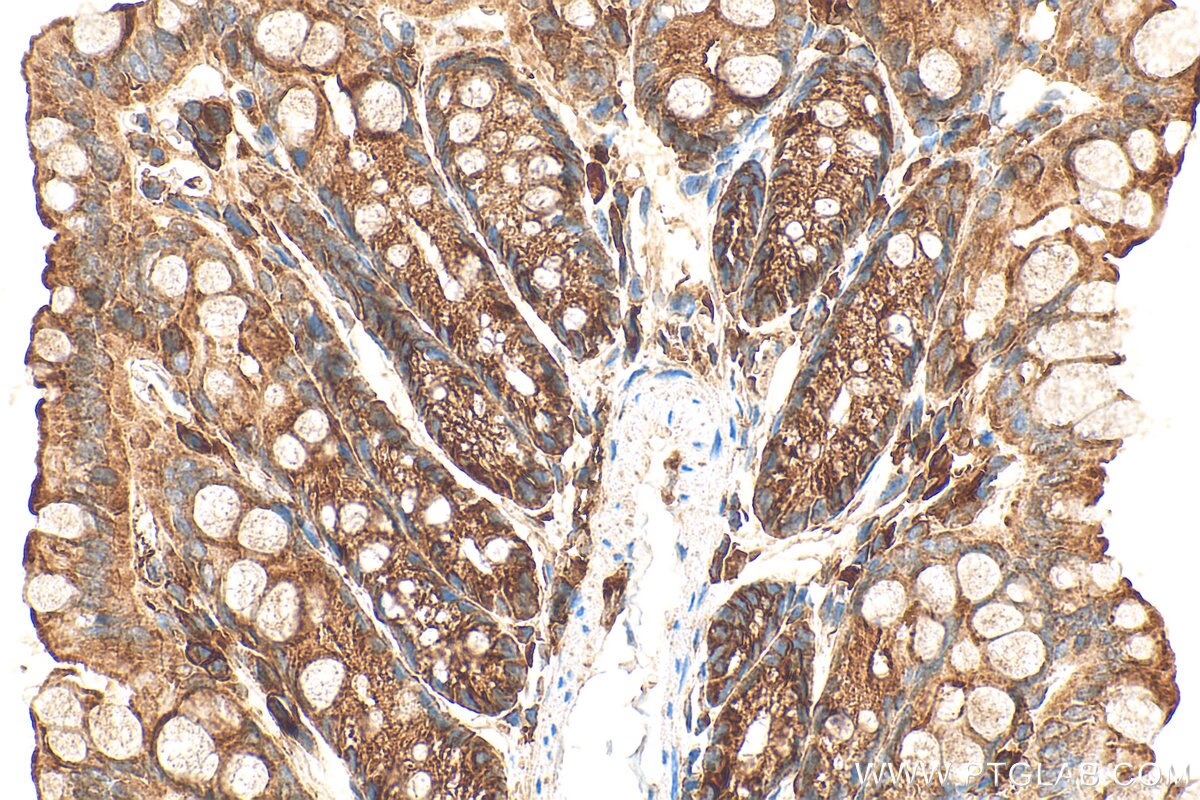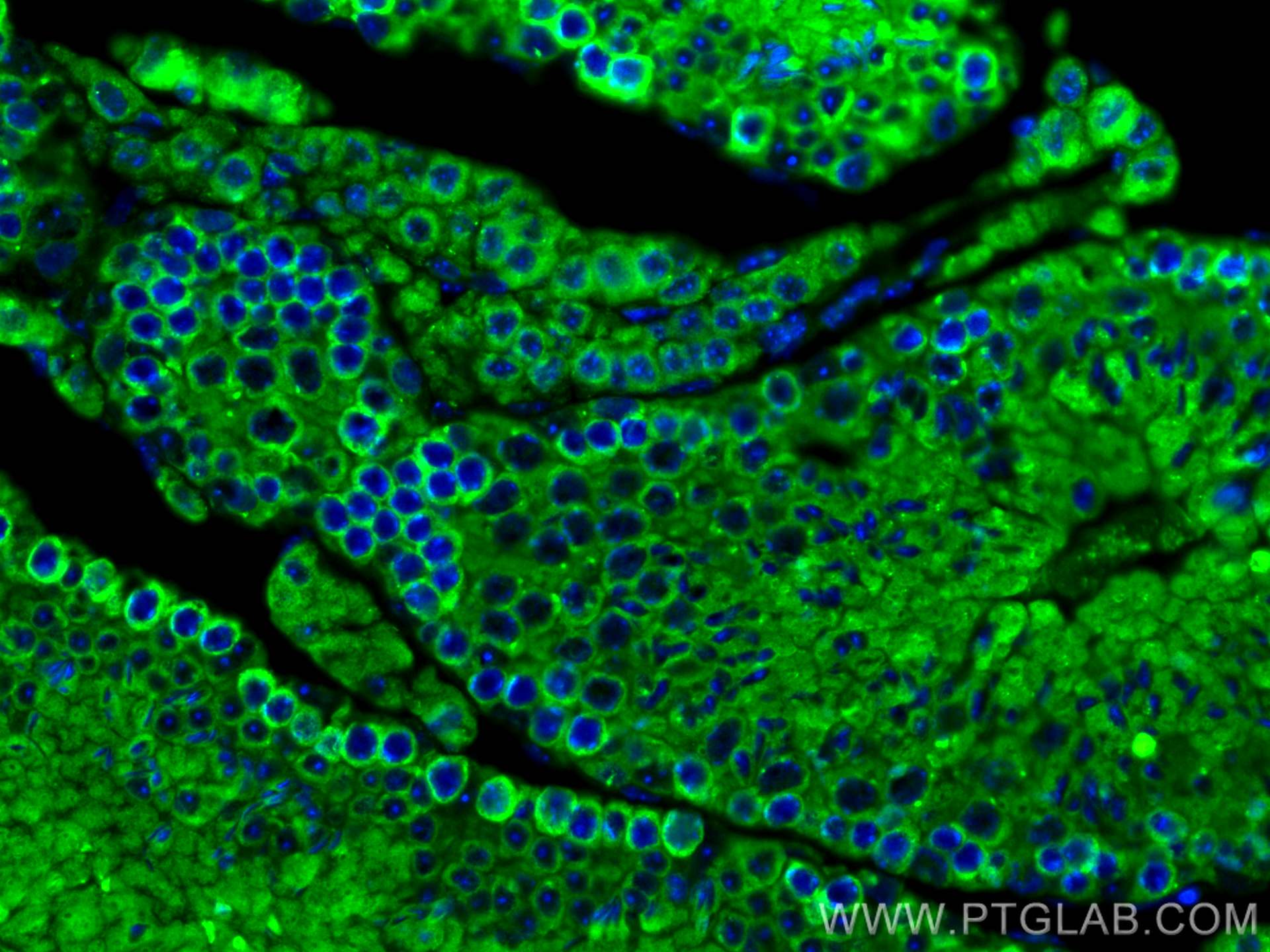- Featured Product
- KD/KO Validated
PRKAR2A Polyklonaler Antikörper
PRKAR2A Polyklonal Antikörper für WB, IHC, IF-P, IP, ELISA
Wirt / Isotyp
Kaninchen / IgG
Getestete Reaktivität
human, Maus, Ratte
Anwendung
WB, IHC, IF-P, IP, ELISA
Konjugation
Unkonjugiert
Kat-Nr. : 10142-2-AP
Synonyme
Geprüfte Anwendungen
| Erfolgreiche Detektion in WB | HeLa-Zellen, humanes Hodengewebe, K-562-Zellen, MCF-7-Zellen, Maushodengewebe, PC-3-Zellen |
| Erfolgreiche IP | HeLa-Zellen, HeLa cells |
| Erfolgreiche Detektion in IHC | Maus-Kolongewebe Hinweis: Antigendemaskierung mit TE-Puffer pH 9,0 empfohlen. (*) Wahlweise kann die Antigendemaskierung auch mit Citratpuffer pH 6,0 erfolgen. |
| Erfolgreiche Detektion in IF-P | Maushodengewebe |
Empfohlene Verdünnung
| Anwendung | Verdünnung |
|---|---|
| Western Blot (WB) | WB : 1:1000-1:4000 |
| Immunpräzipitation (IP) | IP : 0.5-4.0 ug for 1.0-3.0 mg of total protein lysate |
| Immunhistochemie (IHC) | IHC : 1:50-1:500 |
| Immunfluoreszenz (IF)-P | IF-P : 1:50-1:500 |
| It is recommended that this reagent should be titrated in each testing system to obtain optimal results. | |
| Sample-dependent, check data in validation data gallery | |
Veröffentlichte Anwendungen
| KD/KO | See 1 publications below |
| WB | See 6 publications below |
| IHC | See 1 publications below |
| IP | See 1 publications below |
Produktinformation
10142-2-AP bindet in WB, IHC, IF-P, IP, ELISA PRKAR2A und zeigt Reaktivität mit human, Maus, Ratten
| Getestete Reaktivität | human, Maus, Ratte |
| In Publikationen genannte Reaktivität | human, Maus, Ratte |
| Wirt / Isotyp | Kaninchen / IgG |
| Klonalität | Polyklonal |
| Typ | Antikörper |
| Immunogen | PRKAR2A fusion protein Ag0203 |
| Vollständiger Name | protein kinase, cAMP-dependent, regulatory, type II, alpha |
| Berechnetes Molekulargewicht | 43 kDa |
| Beobachtetes Molekulargewicht | 46-52 kDa |
| GenBank-Zugangsnummer | BC002763 |
| Gene symbol | PRKAR2A |
| Gene ID (NCBI) | 5576 |
| Konjugation | Unkonjugiert |
| Form | Liquid |
| Reinigungsmethode | Antigen-Affinitätsreinigung |
| Lagerungspuffer | PBS with 0.02% sodium azide and 50% glycerol |
| Lagerungsbedingungen | Bei -20°C lagern. Nach dem Versand ein Jahr lang stabil Aliquotieren ist bei -20oC Lagerung nicht notwendig. 20ul Größen enthalten 0,1% BSA. |
Hintergrundinformationen
The effects of cAMP in most tissues and cell types are mainly modulated via protein kinase A, a heterotetrameric protein complex consisting of two regulatory and two catalytic subunits. The regulatory subunit of cAMP-dependent protein kinase (PRKAR2A) is one of the regulatory subunits and the gene is located on chromosome region 3p21.3-p21.2. The expression of PRKAR2A is tightly regulated during spermatogenesis, a significant increase in expression of this gene was also found in the human myometrium during pregnancy. This antibody got two bands about 45 kDa and 50-55 kDa in western blotting, and the 50-55kDa may be caused by phosphorylation.
Protokolle
| PRODUKTSPEZIFISCHE PROTOKOLLE | |
|---|---|
| WB protocol for PRKAR2A antibody 10142-2-AP | Protokoll herunterladen |
| IHC protocol for PRKAR2A antibody 10142-2-AP | Protokoll herunterladenl |
| IF protocol for PRKAR2A antibody 10142-2-AP | Protokoll herunterladen |
| IP protocol for PRKAR2A antibody 10142-2-AP | Protokoll herunterladen |
| STANDARD-PROTOKOLLE | |
|---|---|
| Klicken Sie hier, um unsere Standardprotokolle anzuzeigen |
Publikationen
| Species | Application | Title |
|---|---|---|
Signal Transduct Target Ther The AKAP12-PKA axis regulates lipid homeostasis during alcohol-associated liver disease | ||
Cancer Lett Depletion of LAMP3 enhances PKA-mediated VASP phosphorylation to suppress invasion and metastasis in esophageal squamous cell carcinoma.
| ||
Life Sci TMT-based proteomics analysis to screen potential biomarkers of acute-phase TBI in rats. | ||
J Transl Med Nicotine restores olfactory function by activation of prok2R/Akt/FoxO3a axis in Parkinson's disease | ||
J Transl Med F-box protein FBXO21 overexpression inhibits the proliferation and metastasis of clear cell renal cell carcinoma and is closely related to the CREB pathway and tumor immune cell infiltration |
